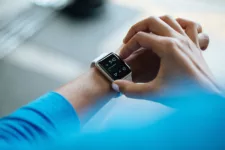Doctor’s growing interest in triggering the elements that lead to the so-called ‘lifestyle illnesses’ has also reached technology, as it is quite common to see among application stores a section dedicated to fitness and lifestyle for our smartphones or tablets. With the first appearance of a smartwatch – concept introduced by Samsung – applied science took a step forward in this journey of tracking life stats through gear we wear.
Despite what most people say about smartwatches being useless, truth is they can monitor vitals like heart rate, blood pressure, blood sugar levels, etc.; but also it is a tool of immense value for other typical day conditions like insomnia, thanks to its sleep-tracking functions. We can even set alarms when these parameters go far from the desirable levels they should be ranged at, preventing life-threatening conditions.
Defining ‘lifestyle illnesses’
In short terms, they can be labelled as the diseases linked to the daily habits of people; however, there are external factors that we cannot affect such as city pollution, genetically predisposition or even, to some extents, stress. Because unhealthy eating, sedentarism, smoking and substance abuse (either drugs or alcohol) are triggers for this group of illnesses, if technology can help us to minimise the impact of the ‘western lifestyle’, then we should not fight upcoming trends related to it.
The list of illnesses to consider, in order of rate and importance, is reduced to:
• Obesity: The product of unhealthy eating habits and reduced physical activity leads to weight gain; thus, breathing problems, hypertension, cardiovascular diseases, diabetes and joint pain are among the most common consequences of this.
• Type II Diabetes: The non-insulin dependent form of diabetes, generally developed by adults though children are susceptible to it in an alarming rate as consequence of eating habits.
• Arteriosclerosis: The name under which we label arterial blood vessel walls thickening, causing blood circulation disorders, angina pectoris or heart failure.
• Heart diseases: Linked to the previous point, unhealthy lifestyle, especially in case of those who had history with drug abuse, can suffer from life-threatening heart diseases if these are not taken seriously. Smoking is one of the main causes related to this point.
• High blood pressure: Putting aside genetic inheritance and obesity to this point, people suffering from insane stress levels are prone to develop hypertension, which is just the gate to a broad range of conditions.
• Cancer: Even if we can say that irregular cell growth is something beyond our control, illnesses like lung cancer because of prolonged smoking, skin cancer due to much sun exposure, and other examples are just one of the main reasons why we should focus on developing a healthy lifestyle.
Scary as it looks, sedentarism is the main cause of most of these illnesses, except for cancer. Other problems linked to this lack of physical activity are anxiety, depression, skin problems, spinal disc herniation and so on. Do you truly intend to keep these habits?
What smartwatches can do for building a healthier lifestyle?
First and foremost, keep you informed of what’s going on, or if you should schedule an appointment to the doctor for a check-up as soon as possible. Despite smartphones having their own sensors for tracking health data, certain aspects are better handled by a Smart Watch, for example, heart rate control or blood sugar levels monitoring, as it strictly requires to have a device attached to your wrist for accurate data detection.
Conditions like epilepsy have found an unexpected relief thanks to software developers who crafted the possibility of giving alarms to a caregiver when a seizure episode is happening. How does that work? Smart watches can detect movement as the shaking of arms, thus repetitive shaking is considered an alarm factor for epilepsy control apps, giving a warning of when and where is the episode happening for getting immediate help.
For bodybuilders and amateur athletes, smartwatches are ‘the’ gadget to have. Tracking calories burnt, distance covered when doing exercises like running, cycling, etc., number of stairs climbed per day, steps walked, and even sleeping patterns; this, along with a good training routine is essential for developing a good shape.
The downside of Smartwatches
Although advancements made with smartwatches have led to considerable improvements in helping us to fight sedentarism, such as getting alarms when we have been sitting for prolonged times or accessing to detailed reports of our activity, there’s plenty road for these gadgets to cover prior becoming a necessity like smartphones prove to be.
For instance, the battery span of these devices are considered the main downside, as we need to charge them almost in a daily basis; and for travellers that’s not always a possibility. The other aspect to consider is accuracy, as though sensors are rapidly improving, they did not reach the level they ought to have for be considered a reliable data measurement source like what heart rate monitor gadgets are known to be.
And finally, price is one major downside, by acknowledging the fact the cheapest smartwatch is nearly four times the price of a high end sport watch from well-known brands to date.








